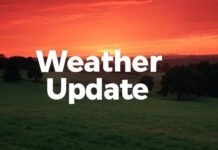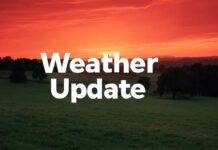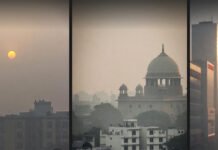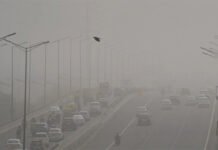INVC NEWS
Manila : The Philippines has reported three new cases of monkeypox, raising the total number of confirmed cases to eight within the country. The Department of Health (DOH) made this announcement on Sunday, emphasizing the critical need for continued vigilance and public awareness. The newly reported cases include two individuals: one from Metro Manila and another from South Manila, as confirmed by the Philippine Health Secretary. These developments mark a significant point in the nation’s ongoing battle against the viral outbreak, highlighting the need for sustained efforts to prevent further transmission.
Detailed Breakdown of the New Cases
The three new monkeypox cases identified in the Philippines involve different profiles, illustrating the virus’s unpredictable nature and its spread within various communities:
- Metro Manila Case: The first new case involves a male patient from Metro Manila, who is currently under close medical observation. Authorities are monitoring his condition closely, ensuring that he receives the necessary medical care to manage the symptoms associated with monkeypox.
- South Manila Case: The second case is also a male patient, residing in South Manila. His diagnosis has prompted health officials to issue advisories in the surrounding areas, urging the public to remain cautious and report any symptoms that may align with monkeypox.
These two cases underscore the need for heightened surveillance in metropolitan areas, where the dense population could facilitate quicker transmission of the virus.
Ongoing Surveillance and Contact Tracing Efforts
As the number of monkeypox cases in the Philippines continues to rise, the DOH has ramped up its surveillance and contact tracing efforts. Since July 2022, a total of 17 cases have been reported in the country, with eight active cases currently under observation and treatment. The DOH has confirmed that nine of these cases have successfully recovered since 2023, showcasing the effectiveness of the treatment protocols in place.
However, the presence of eight active cases indicates that the threat of monkeypox is far from over. The DOH is actively tracing individuals who have come into contact with these patients to mitigate the risk of further spread. The department’s spokesperson emphasized that contact tracing is critical in containing the virus, particularly in densely populated urban areas.
Understanding Monkeypox: Symptoms and Transmission
To effectively combat the spread of monkeypox, it is crucial to understand the nature of the virus and how it is transmitted. Monkeypox is a rare viral disease that is primarily spread through close contact with an infected person or animal. The virus can be transmitted through:
- Direct contact with bodily fluids, such as blood or pus from the monkeypox rash.
- Respiratory droplets during prolonged face-to-face contact.
- Contaminated objects such as bedding or clothing that has been in contact with an infected person.
Symptoms of monkeypox typically appear 7-14 days after exposure and can include:
- Fever
- Intense headache
- Swelling of the lymph nodes
- Back pain
- Muscle aches
- Exhaustion
- A rash that often begins on the face and then spreads to other parts of the body.
The rash progresses from macules to papules, vesicles, pustules, and finally crusts, which fall off after several weeks. Although the symptoms of monkeypox are generally milder than those of smallpox, the disease can still be severe, particularly in individuals with weakened immune systems.
Public Health Response and Precautions
In response to the growing number of monkeypox cases, the DOH has issued several public health guidelines aimed at reducing the risk of transmission. The department urges the public to:
- Avoid close contact with individuals who are known or suspected to have monkeypox.
- Practice good hygiene by washing hands regularly with soap and water or using an alcohol-based hand sanitizer.
- Avoid touching your face, especially the eyes, nose, and mouth, with unwashed hands.
- Seek medical attention if you experience symptoms associated with monkeypox, particularly if you have been in close contact with someone who has been diagnosed with the virus.
The DOH has also advised healthcare workers to follow strict infection control protocols, including the use of personal protective equipment (PPE) when treating patients suspected of having monkeypox.
Government Initiatives to Control the Spread
The Philippine government has initiated several measures to control the spread of monkeypox and protect public health. Among these initiatives are:
- Enhanced Screening Procedures: At airports and other points of entry, enhanced screening procedures have been implemented to identify potential cases of monkeypox. Travelers coming from regions with known outbreaks are subject to more rigorous health checks.
- Public Awareness Campaigns: The DOH is leading extensive public awareness campaigns to educate citizens about monkeypox, its symptoms, and preventive measures. These campaigns are disseminated through various channels, including social media, television, and radio.
- Collaboration with International Health Bodies: The DOH is working closely with international health organizations, such as the World Health Organization (WHO), to monitor the global situation and ensure that the country’s response is aligned with the latest scientific findings and recommendations.
Impact on Public Health Infrastructure
The recent surge in monkeypox cases poses a significant challenge to the Philippines’ public health infrastructure. The ongoing COVID-19 pandemic has already stretched resources thin, and the emergence of monkeypox adds another layer of complexity to the health sector’s response efforts. Hospitals and clinics are now tasked with managing both COVID-19 and monkeypox, which requires careful resource allocation and patient management strategies.
The DOH has acknowledged these challenges and is working to bolster the country’s healthcare capacity. This includes ensuring that healthcare facilities are adequately equipped to handle a potential increase in monkeypox cases and that healthcare workers are trained to identify and manage the disease effectively.
The Road Ahead: Vigilance and Preparedness
As the situation develops, the DOH continues to stress the importance of vigilance and preparedness. The public is urged to stay informed about the latest updates on monkeypox and to follow the health guidelines issued by the department. By working together and adhering to these measures, the spread of monkeypox can be controlled, and the health and safety of the population can be safeguarded.
In conclusion, the addition of three new monkeypox cases in the Philippines underscores the ongoing threat posed by this viral disease. With a total of eight active cases now reported, the DOH is intensifying its efforts to trace contacts, treat affected individuals, and prevent further transmission. Public cooperation and adherence to health protocols are critical in the fight against monkeypox as the nation navigates this public health challenge.
















